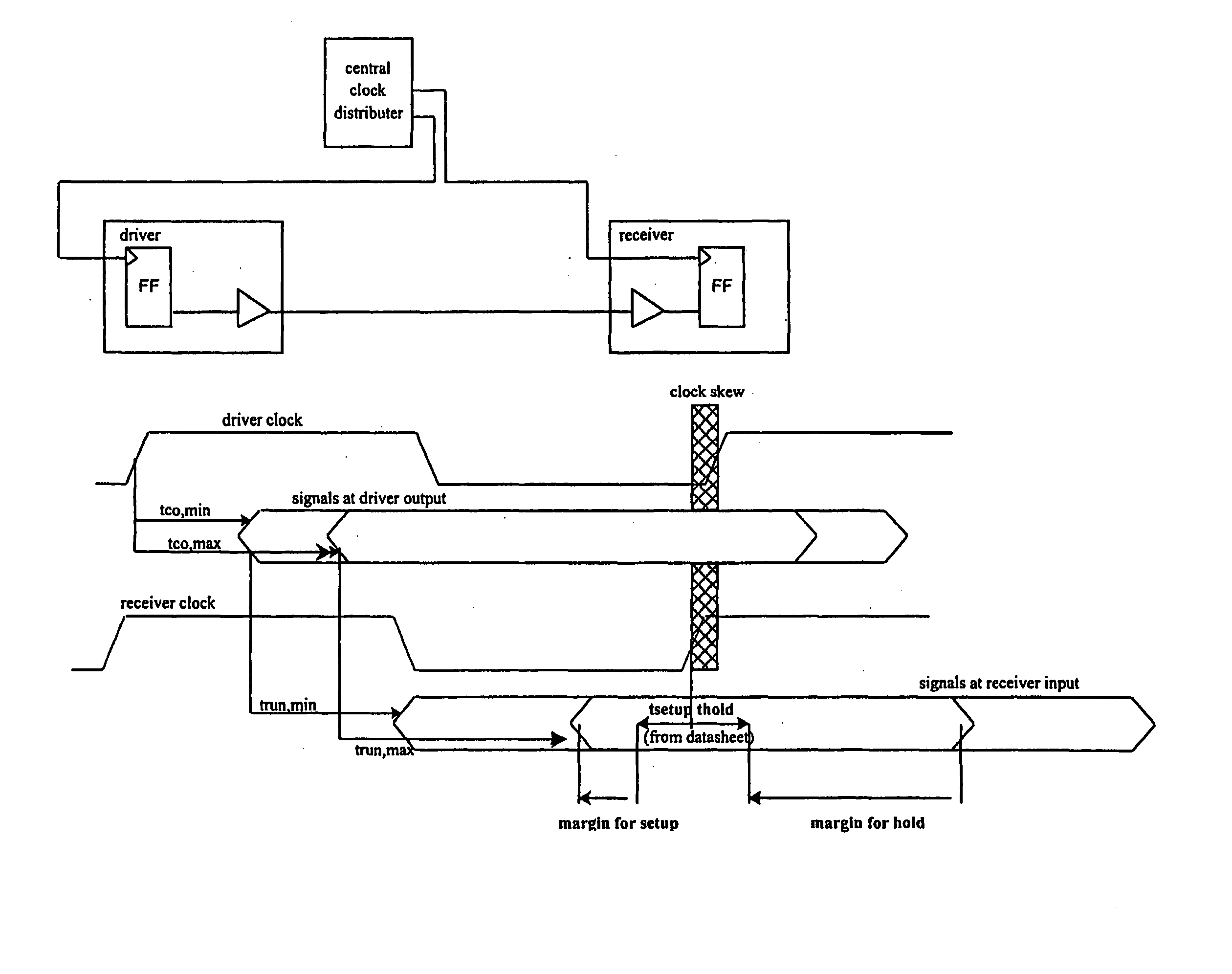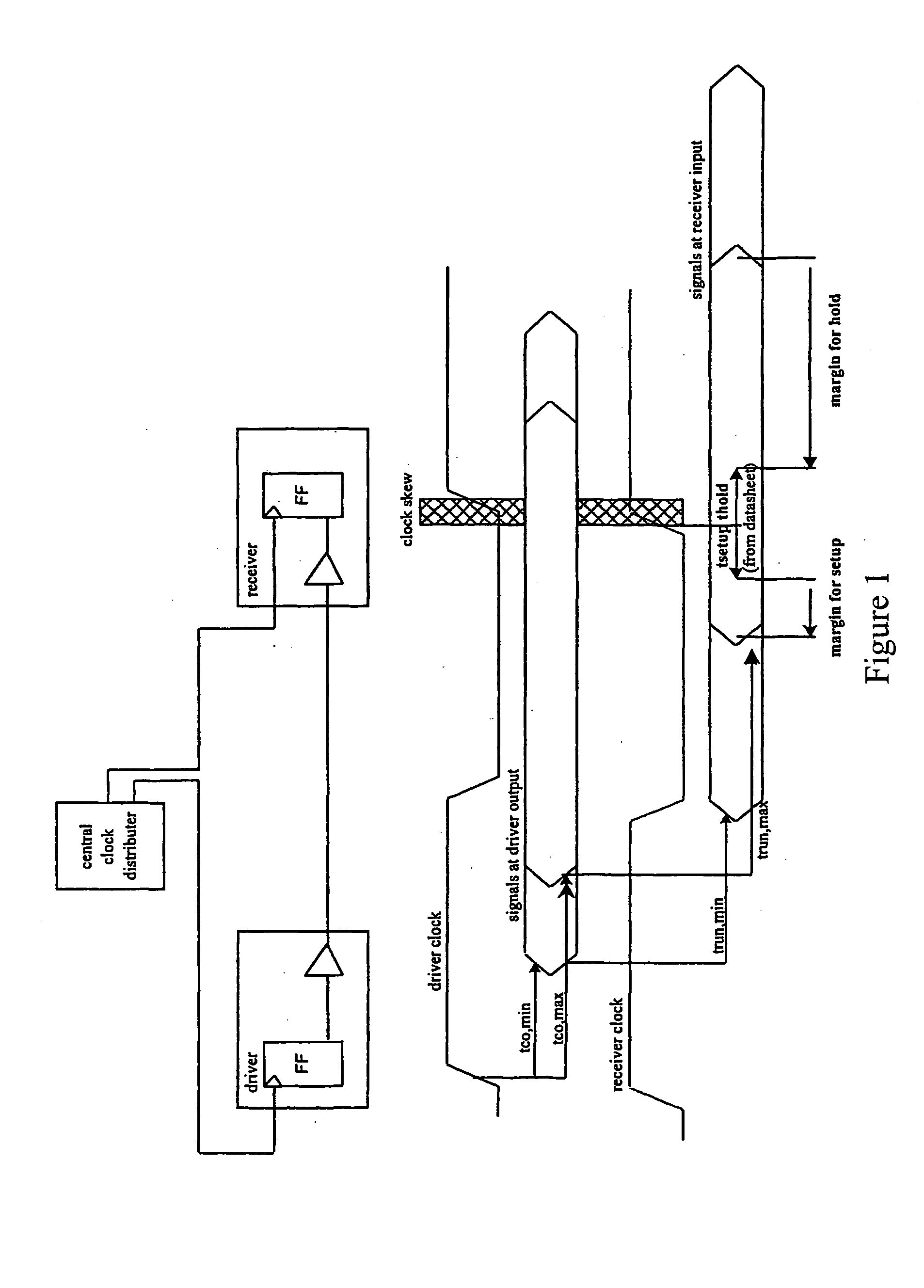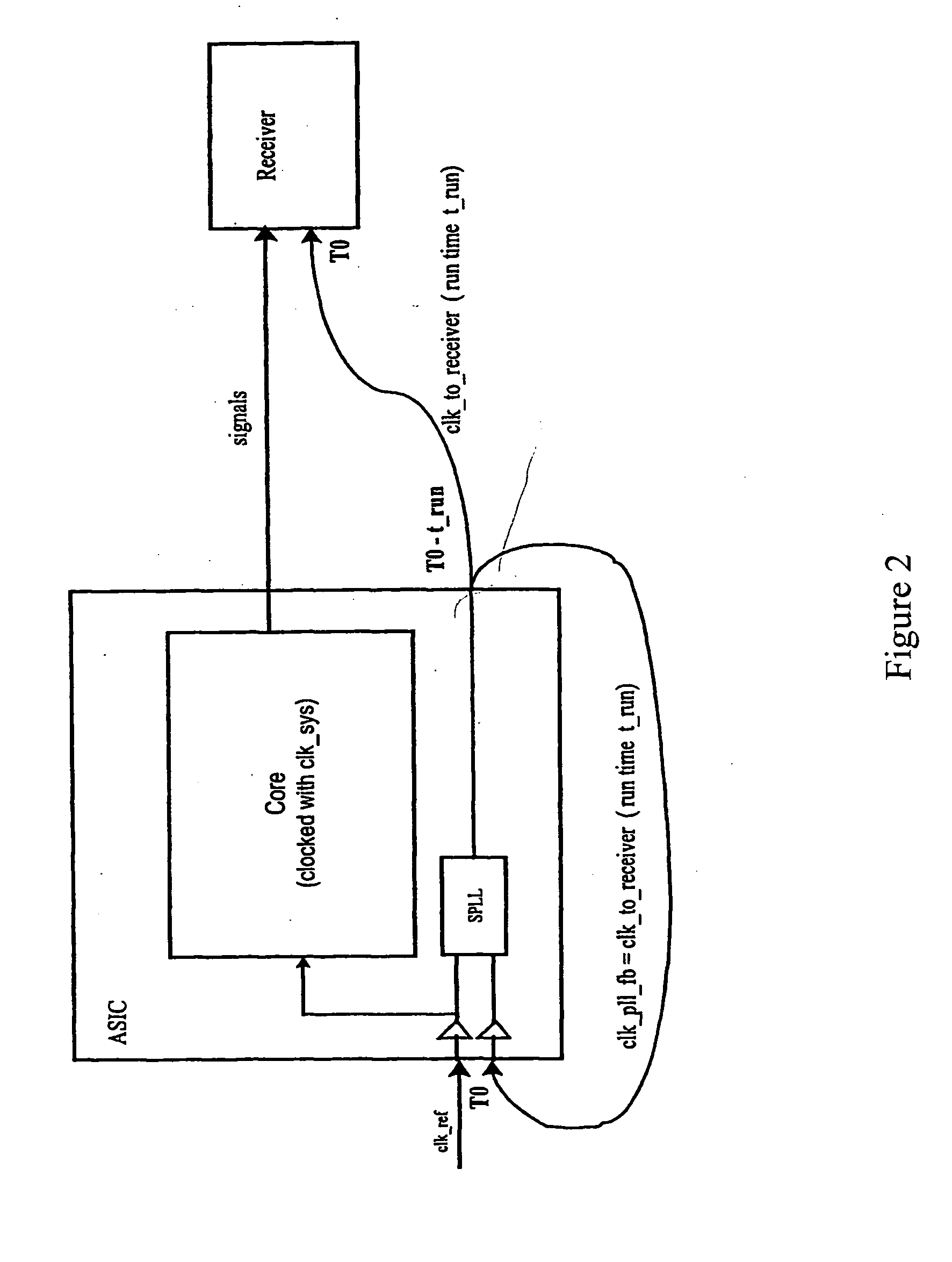Option for independently adjusting the timing of the forward and reverse direction of bi-directional digital signals
- Summary
- Abstract
- Description
- Claims
- Application Information
AI Technical Summary
Benefits of technology
Problems solved by technology
Method used
Image
Examples
Embodiment Construction
[0021] The principle presented is realized by way of example in an SDRAM memory controller comprising an ASIC, 4.times.5 12 MB SDRAM DIMMs (see FIG. 4).
[0022] If the delay lines are initially regarded as not present, then all the clock edges at the ASIC input and at the DIMMs are locked in phase (TO).
[0023] The clock of the DIMMs can be shifted by means of delay 1. An increase means that the DIMM clock is leading, which serves to comply with the hold time. Coupling the output signals to the output clock ensures there is an adequate budget for setup compliance.
[0024] The clocking in of the reverse direction signals can be delayed by means of delay 2. Because the clock-to-output time for SDRAMs is relatively high at 5.6 ns (the entire clock period only has 7.5 ns!), this is very necessary.
[0025] The entire clock system can be shifted forward by means of delay 3.
[0026] In addition to the schematic circuit diagram shown in (3), a PLL clock driver is also installed. This multiplies the o...
PUM
 Login to View More
Login to View More Abstract
Description
Claims
Application Information
 Login to View More
Login to View More - R&D
- Intellectual Property
- Life Sciences
- Materials
- Tech Scout
- Unparalleled Data Quality
- Higher Quality Content
- 60% Fewer Hallucinations
Browse by: Latest US Patents, China's latest patents, Technical Efficacy Thesaurus, Application Domain, Technology Topic, Popular Technical Reports.
© 2025 PatSnap. All rights reserved.Legal|Privacy policy|Modern Slavery Act Transparency Statement|Sitemap|About US| Contact US: help@patsnap.com



